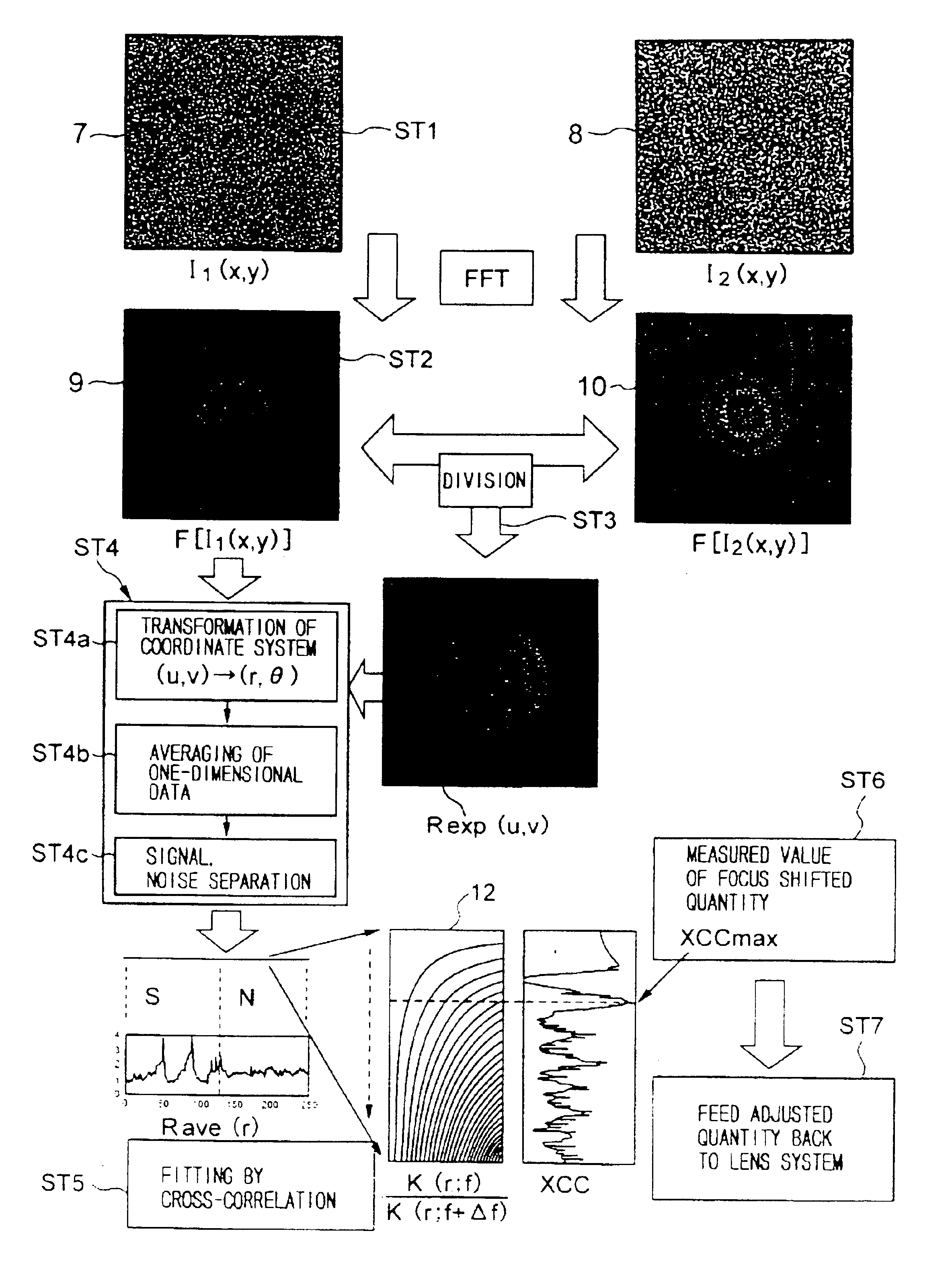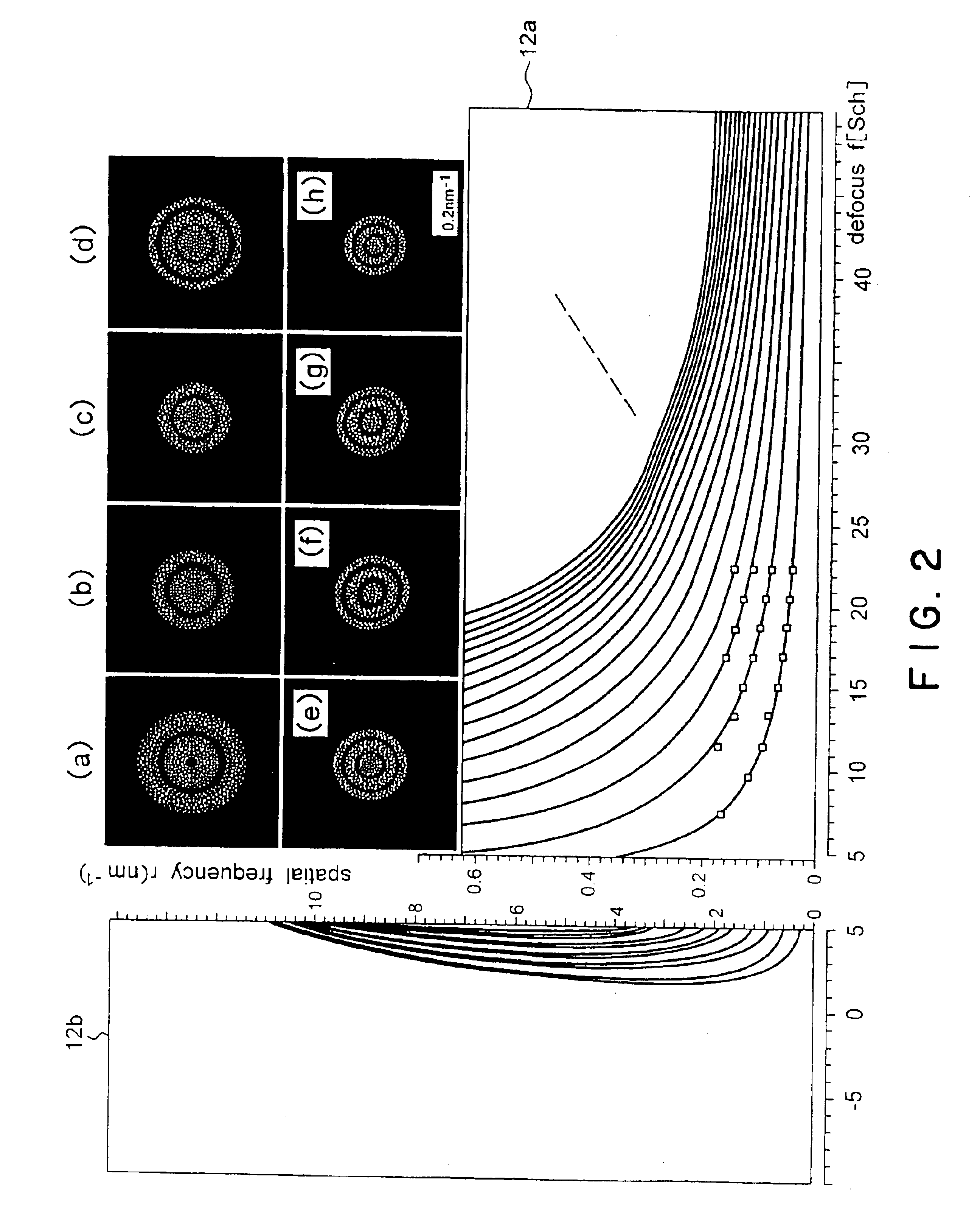Electron microscope and method for controlling focus position thereof
a technology of electron microscope and focus position, which is applied in the field of electron microscope, can solve the problems of increasing the problem, difficulty in automatic adjustment method, and difficulty in carrying out automation
- Summary
- Abstract
- Description
- Claims
- Application Information
AI Technical Summary
Benefits of technology
Problems solved by technology
Method used
Image
Examples
Embodiment Construction
[0032]Referring to the accompanying drawings, the preferred embodiment of an electron microscope and a method for controlling its focus position according to the present invention will be described below.
[0033]The present invention is intended to detect first and second two images at two focus positions, which are realized by changing a predetermined physical quantity only by a known quantity, to compare the detected results with theoretical data to recognize the electron optical state of an electron microscope to automatically adjust its focus position and / or astigmatism. The predetermined physical quantity may be any physical quantity univocally influencing the focus position of the electron microscope. The predetermined physical quantity should not be limited to the focus position, but it may be another physical quantity, e.g., an accelerating voltage of electron beams. In the following descriptions, the focus position itself will be used as an example of a predetermined physical...
PUM
 Login to View More
Login to View More Abstract
Description
Claims
Application Information
 Login to View More
Login to View More - R&D
- Intellectual Property
- Life Sciences
- Materials
- Tech Scout
- Unparalleled Data Quality
- Higher Quality Content
- 60% Fewer Hallucinations
Browse by: Latest US Patents, China's latest patents, Technical Efficacy Thesaurus, Application Domain, Technology Topic, Popular Technical Reports.
© 2025 PatSnap. All rights reserved.Legal|Privacy policy|Modern Slavery Act Transparency Statement|Sitemap|About US| Contact US: help@patsnap.com



